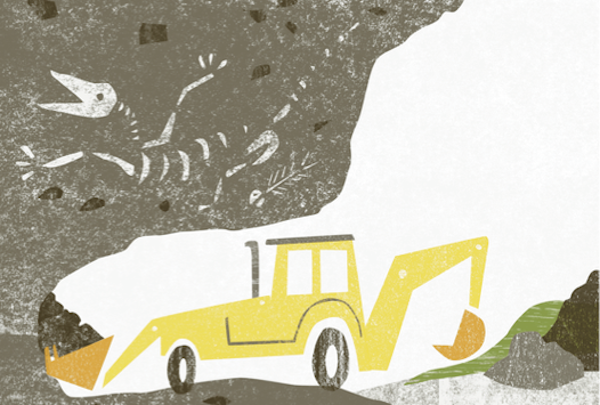Welcome to the carbon bubble: the climate cliff, the fat lady singing – aka the money we’ve invested in fossil fuels

What do the Anglican church, Scottish widows and Harvard University have in common? They’ve all got savings. And they’ve all started to wonder just what their savings do in the middle of the night. There’s a problem looming for investors that threatens to dwarf the subprime mortgage crisis. It’s been dubbed the climate cliff, the carbon bubble, the fat lady singing, the point of no return – all handy ways of talking about ‘the money we’ve invested in fossil fuels we haven’t dug up and burned yet’.
We can’t use two-thirds of this fuel stash in the immediate future, says the International Energy Agency, without the planet getting more than two degrees hotter. (Two degrees is the internationally-agreed-upon, family- friendly, you-can-try-this-at-home form of global warming.) We can afford to emit 565 gigatons more carbon dioxide to stay below the two-degree temperature increase, according to 350.org, but we’ve got a whopping 2,795 gigatons of potential carbon dioxide buried in the ground. Which we’ve invested in as though we’re expecting to use it any day now.
“An estimated 50-80 percent of the current market value of oil, gas and coal companies is based on unburned reserves,” writes Mindy Lubber, director of the $11 trillion Investor Network on Climate Risk, in Forbes. Those underground assets are worth $20 trillion – imagine writing that off. (The subprime mortgage fiasco evaporated ‘only’ $2 trillion in assets.)
The risk of these underground reserves becoming ‘stranded assets’ is getting a few people worried. In October 2013, a group of 70 global investors representing more than $3 trillion wrote to 45 of the world’s largest oil, gas and coal companies with the message, “Uh, you guys should probably do a risk assessment.”
Some investors, such as the Anglican church of Dunedin, have redirected their money away from fossil fuels (or ‘divested’) because they believe they have a moral obligation to. Others just think it makes good financial sense. In December 2013, Bloomberg introduced a tool that allows investors to calculate how much of their money is tied up in carbon-intensive assets likely to be hit by government regulations or carbon pricing.
Meanwhile, the quest to divest has fired up university students, who have a ready-made target: their institutions. (So far in the States more than 40 institutions have divested; others, such as Harvard, are pretty happy with their rate of return.) Mobilisation of millennials is mostly thanks to the global 350.org campaign, which is also targeting the NZ Super Fund to divest the $440 million or so it has tied up in fossil fuels. According to a World Wildlife Fund Report, together NZ Super and ACC have $1 billion invested in coal, gas or oil.
Of course the reason investment in fossil fuels is so profitable is that we all love flying back and forth from Melbourne, shopping at the Book Depository and driving to the supermarket. And when Harvard president Drew Faust declined his students’ divestment campaign, he wrote that he saw a “troubling inconsistency” in boycotting companies whose products we extensively use. “Fossil fuels account for 87 percent of the energy people use around the world to feed, clothe, shelter, heal, comfort and educate themselves,” points out the Center for Industrial Progress’ manifesto.
The thing is, in the future all of these activities will be fuelled by different means – but we haven’t been forced to invent those means yet. In 2012 the 200 largest oil and gas companies spent $674 billion on locating and preparing new resources; imagine if that went into research and development of renewable energy. Maybe we could take a page from Easter Island, whose inhabitants learned the lesson ‘don’t use up all your natural resources’ by using up all their natural resources. We’ve done that a few times already in different pockets of the planet. It’s time to move on.




